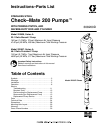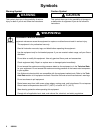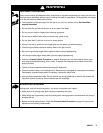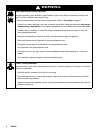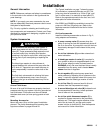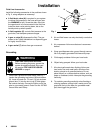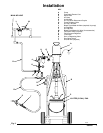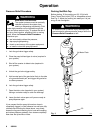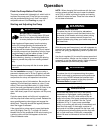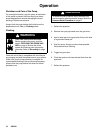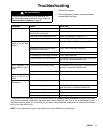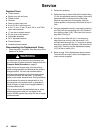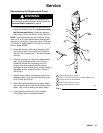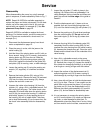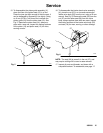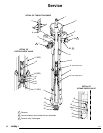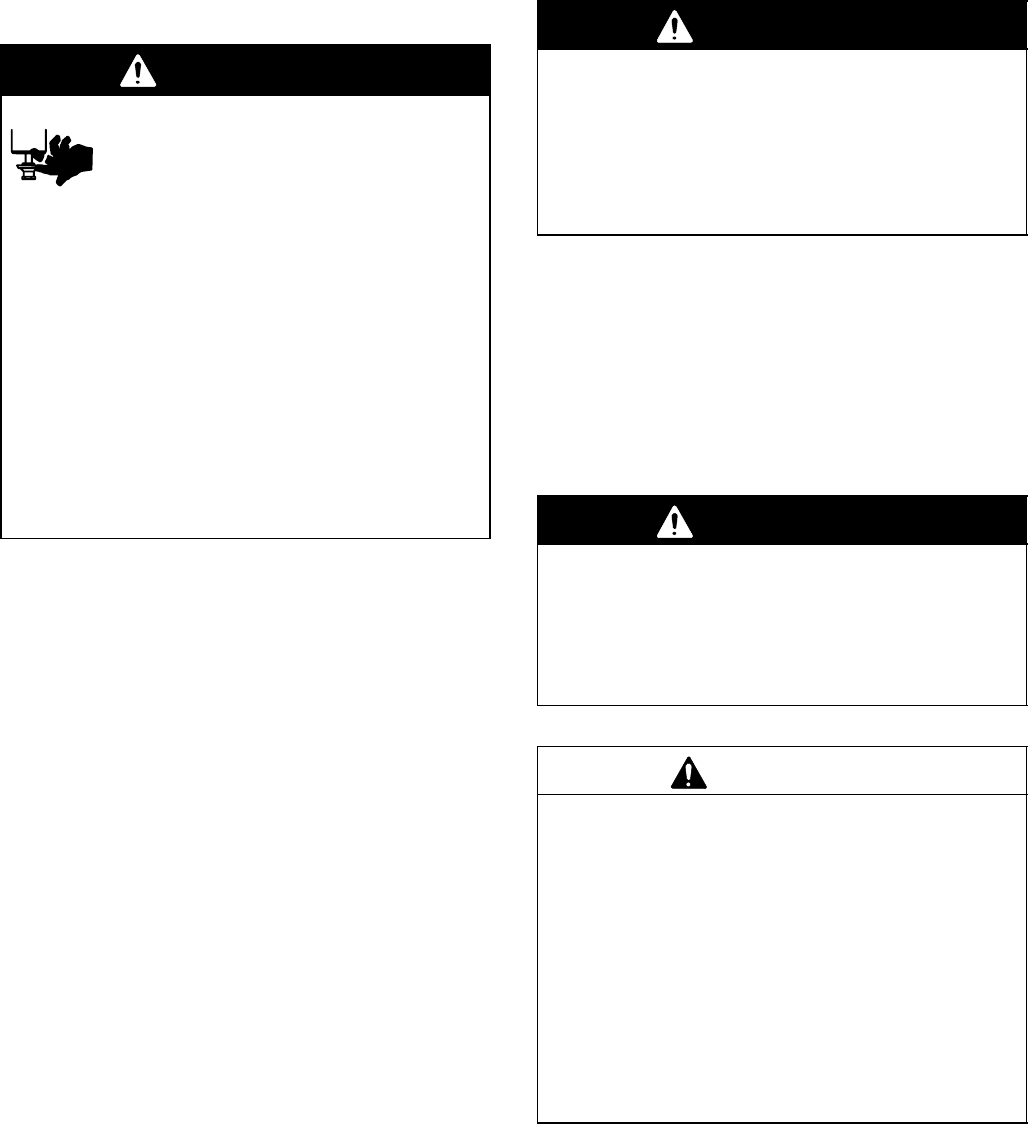
308200 9
Operation
Flush the Pump Before First Use
The pump is tested with lightweight oil, which is left in
to protect the pump parts. If the fluid you are using
may be contaminated by the oil, flush it out with a
compatible solvent. See Flushing on page 10.
Starting and Adjusting the Pump
WARNING
MOVING PARTS HAZARD
See Fig. 3. The priming piston (23) and
the air motor piston (located behind the
air motor plates) move during operation.
Keep hands and fingers away from the priming
piston (23) during operation and whenever the
pump is charged with air. The priming piston ex-
tends beyond the intake cylinder (20) to pull materi-
al into the pump and can amputate a hand or finger
caught between it and the intake cylinder. Follow
the Pressure Relief Procedure on page 8,
before checking, clearing, or cleaning the priming
piston to prevent the pump from starting acciden-
tally.
Never operate the pump with the air motor plates
removed.
See the Installation on page 7. If you are using a
pneumatic elevator cart or 19 liter (5 gallon) ram with
the pump, refer to the separate instructions for those
components for set-up and operation instructions.
Lower the pump into a fluid container. Be sure the air
regulator (K) and bleed-type master air valve (J) are
closed. Then open the bleed valve (J). Hold a metal
part of the spray gun/dispensing valve (S) firmly to the
side of a grounded metal pail and hold the trigger
open. Now slowly open the air regulator until the pump
starts.
Cycle the pump slowly until all the air is pushed out
and the pump and hoses are fully primed. Release the
spray gun/dispensing valve trigger and engage the
safety latch. The pump should stall against pressure
when the trigger is released.
If the pump fails to prime properly, open the bleeder
valve (33) slightly. See Fig. 7 on page 16. Use the
bleeder hole (on the underside of the valve housing) as
a priming valve until the fluid appears at the hole.
Close the bleeder valve.
NOTE: When changing fluid containers with the hose
and gun already primed, be sure to open the bleeder
valve (33), to assist in priming the pump and venting
air before it enters the hose. Close the valve when all
air has been eliminated.
WARNING
SKIN INJECTION HAZARD
To reduce the risk of fluid injection, do not use
your hand or fingers to cover the bleed hole on the
underside of the bleeder valve body when priming
the pump. Use a crescent wrench to open and
close the bleeder plug. Keep your hands away from
the bleed hole.
With the pump and lines primed, and with adequate air
pressure and volume supplied, the pump will start and
stop as the spray gun/dispensing valve is opened and
closed.
Use the air regulator (K) to control the pump speed and
the fluid pressure. Always use the lowest air pressure
necessary to get the desired results. Higher pressures
cause premature tip/nozzle and pump wear.
WARNING
To reduce the risk of overpressurizing the system,
which could result in component rupture and cause
serious injury, NEVER exceed the specified maxi-
mum incoming air pressure to the pump (see the
Technical Data on pages 24–27).
CAUTION
Do not allow the pump to run dry. It will quickly
accelerate to a high speed, causing damage. A
pump runaway valve (G), which shuts off the air
supply to the pump if the pump accelerates beyond
the pre-set speed, is available. See the Typical
Installation in Fig. 2. If your pump accelerates
quickly, or is running too fast, stop it immediately and
check the fluid supply. If the supply container is
empty and air has been pumped into the lines, refill
the container and prime the pump and the lines with
fluid, or flush and leave it filled with a compatible
solvent. Be sure to eliminate all air from the fluid
system.



